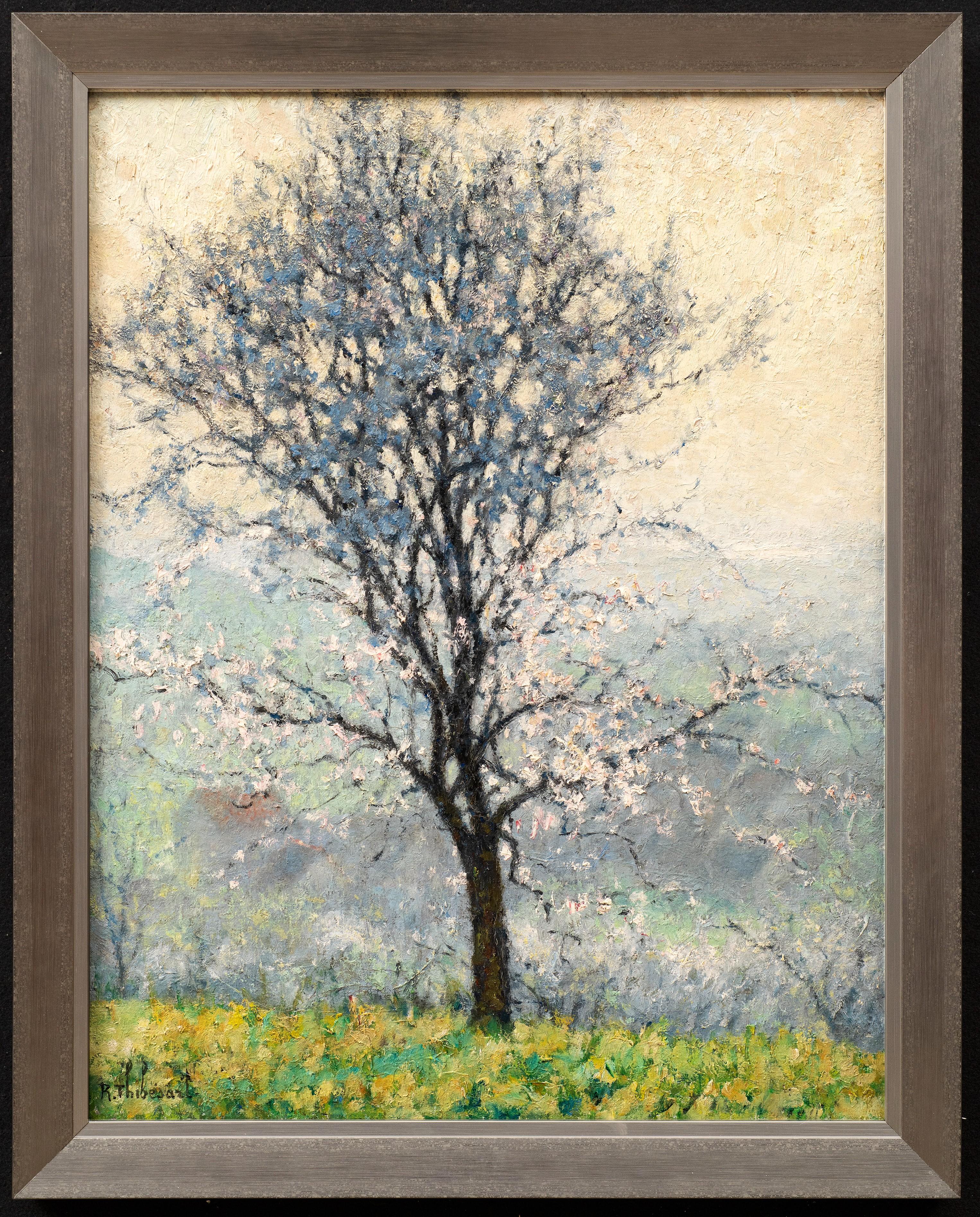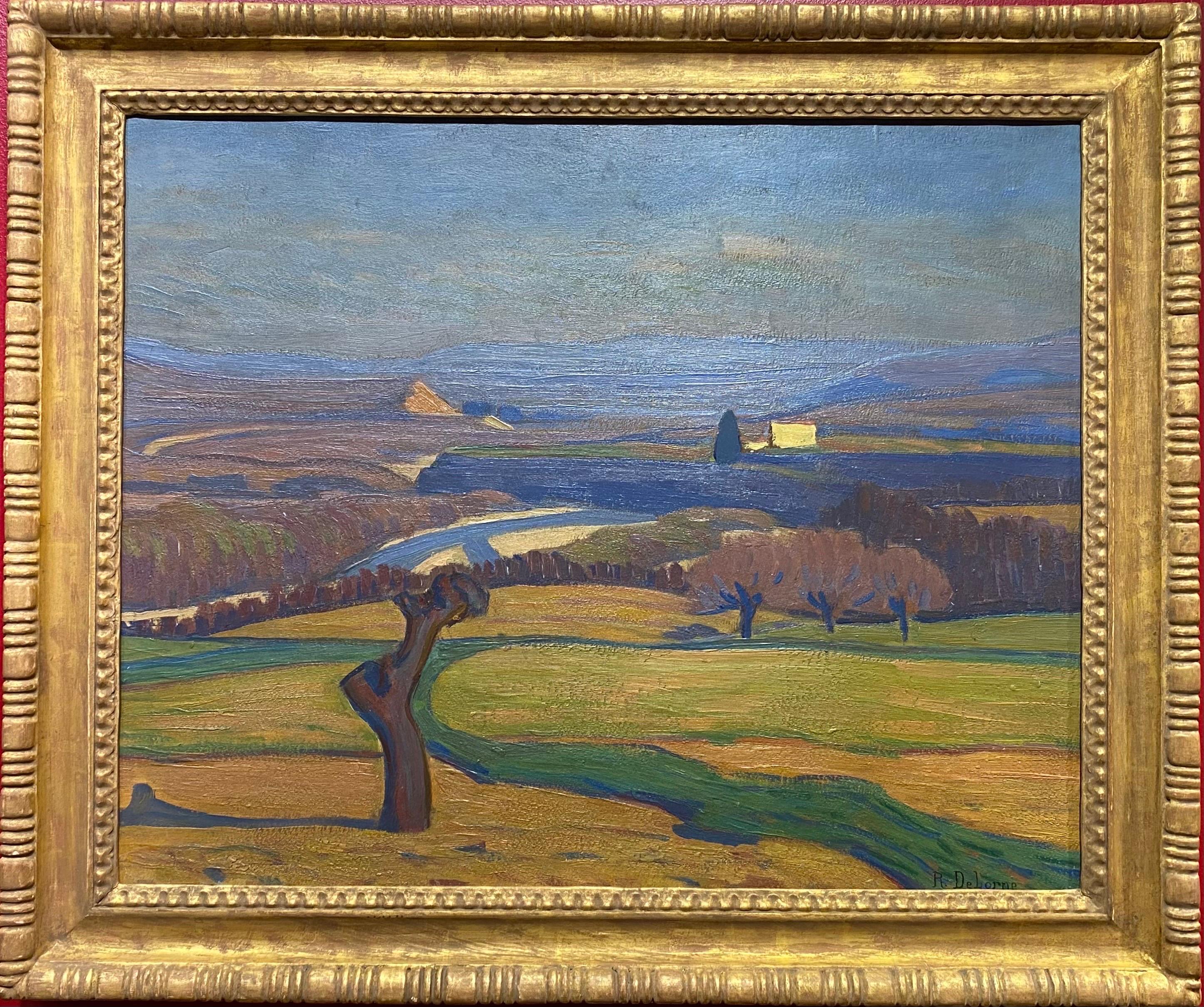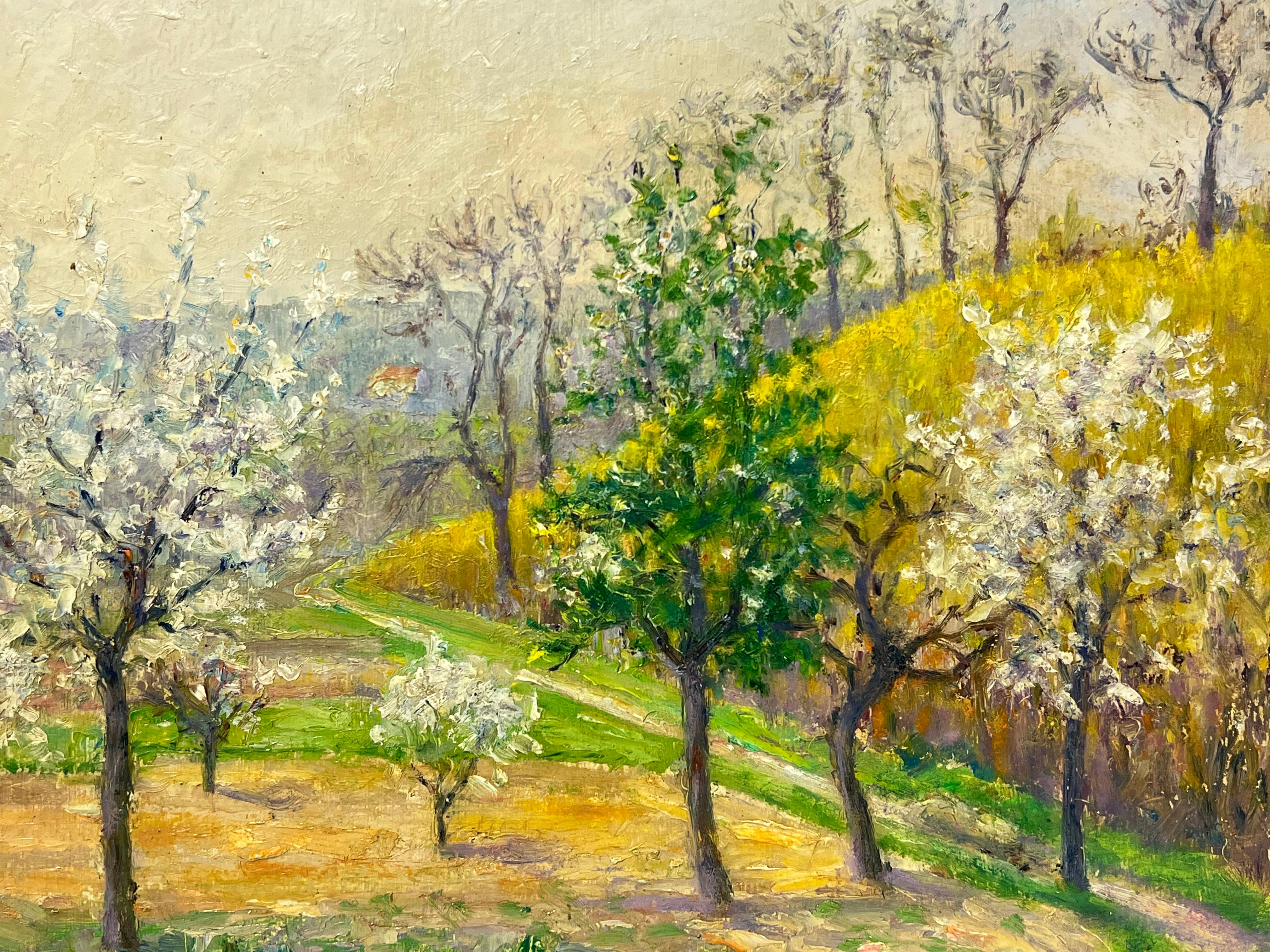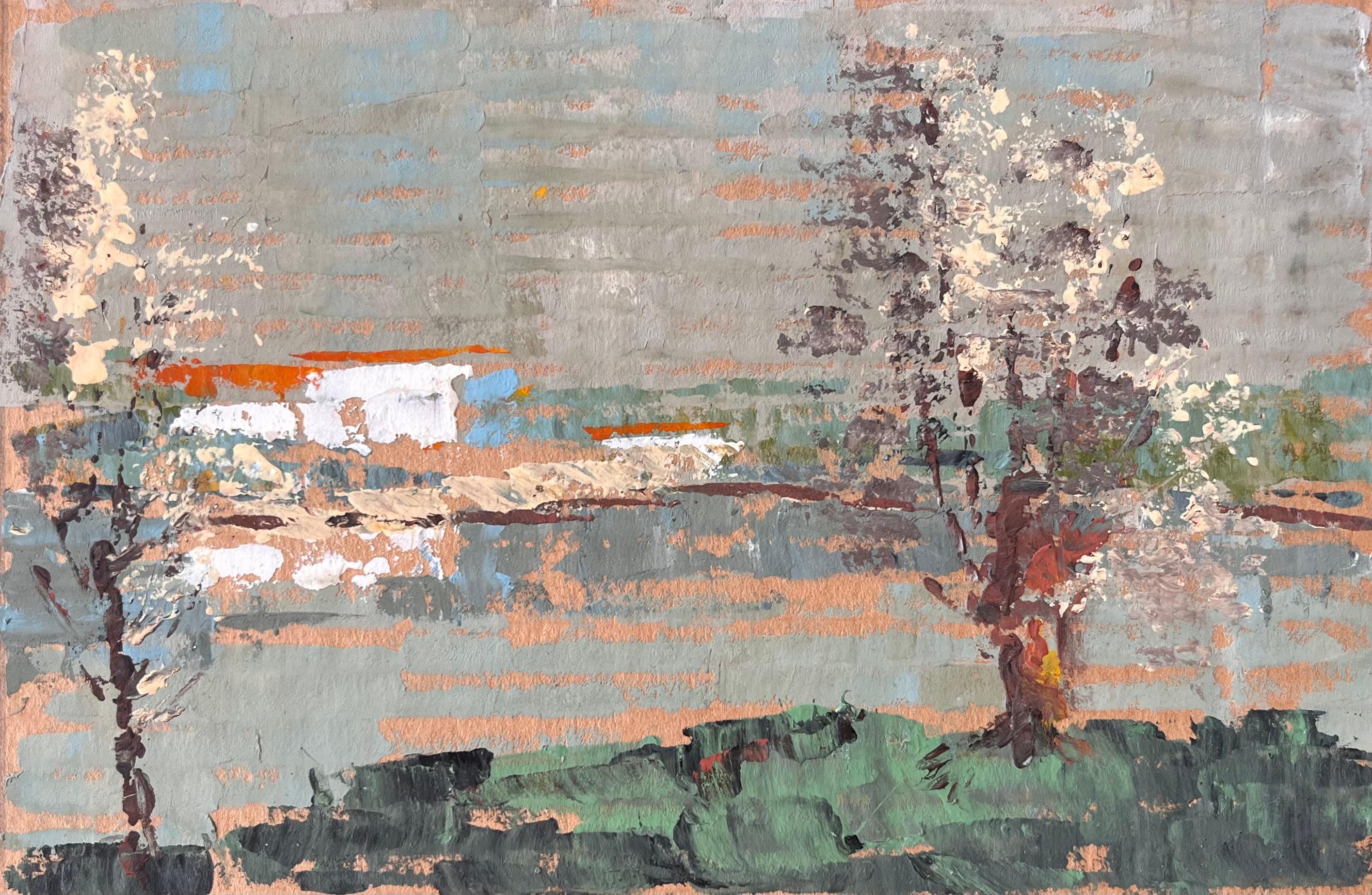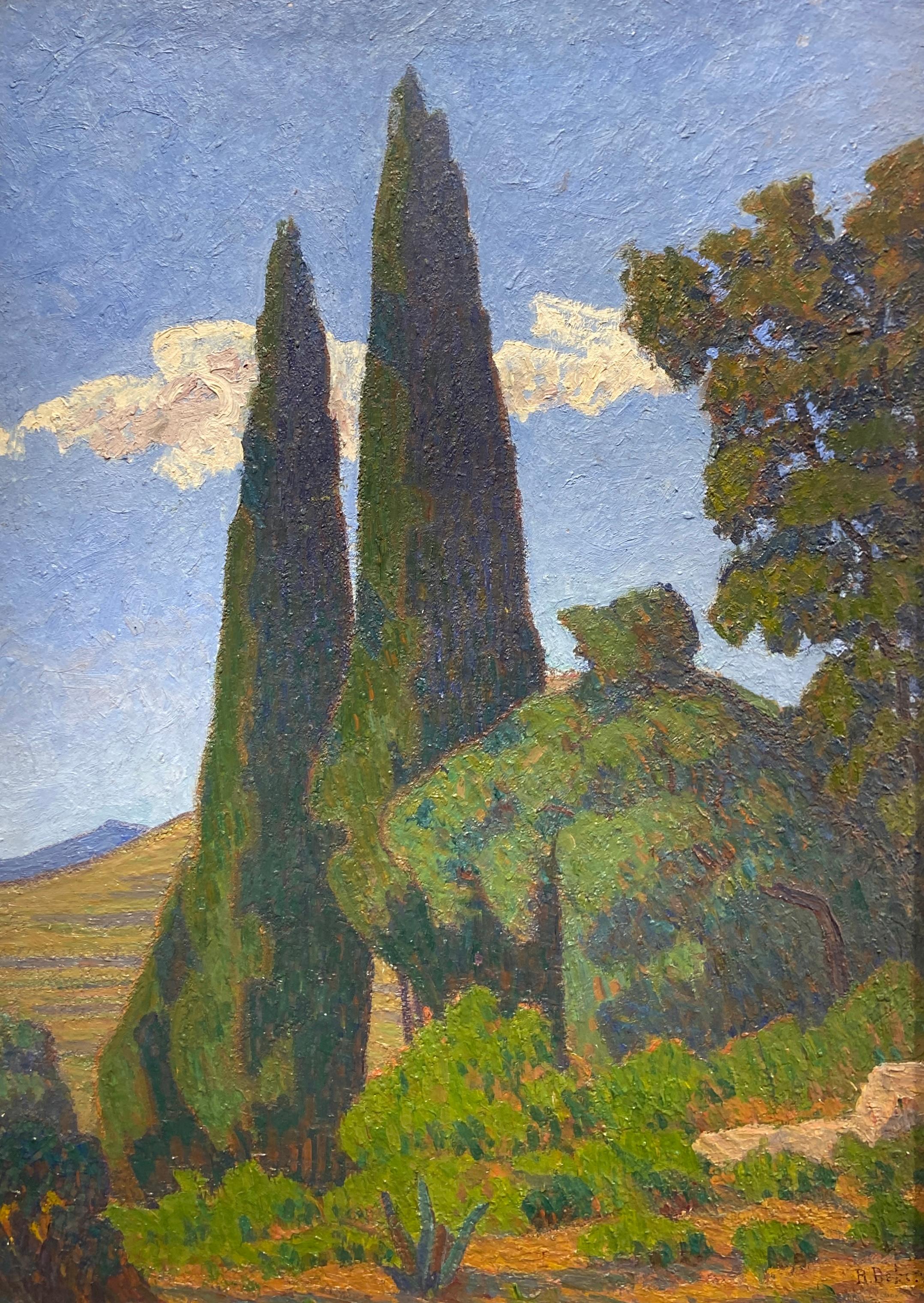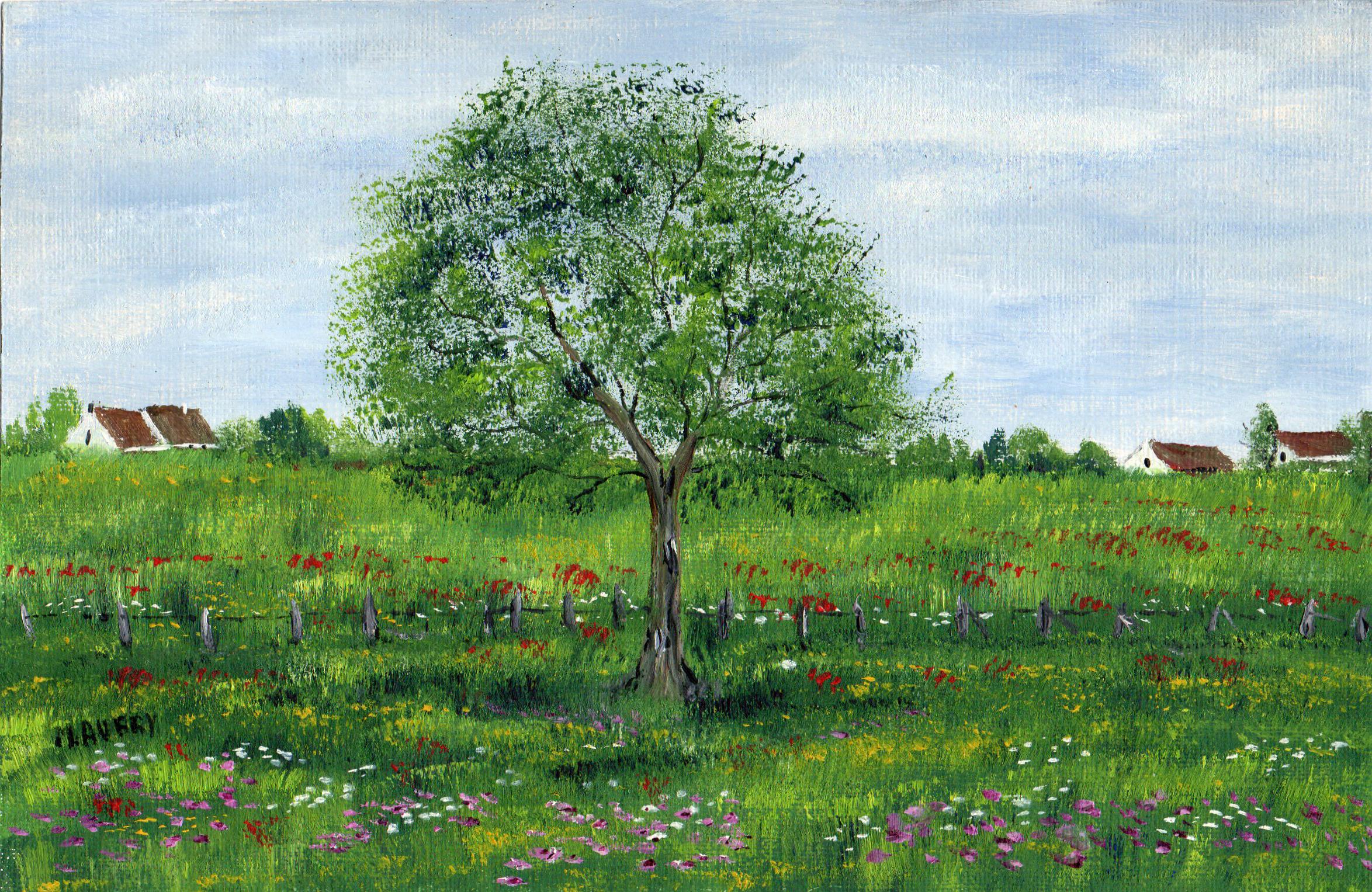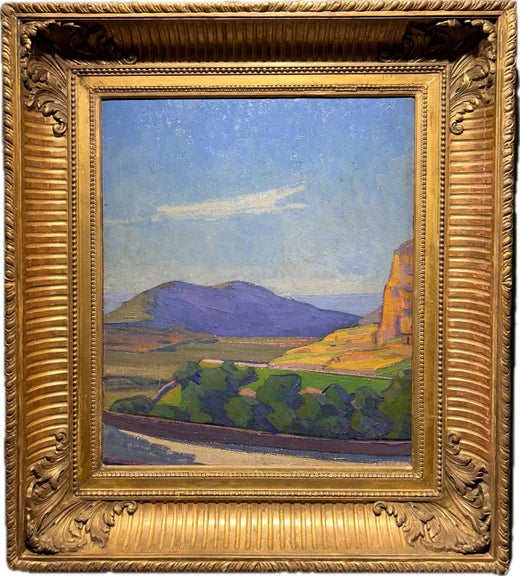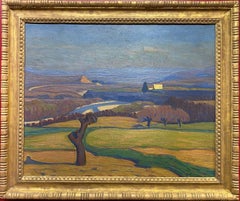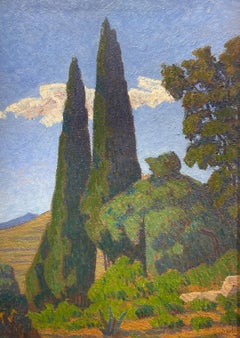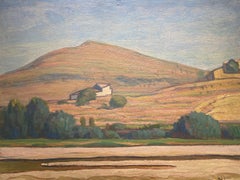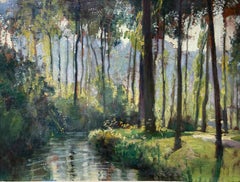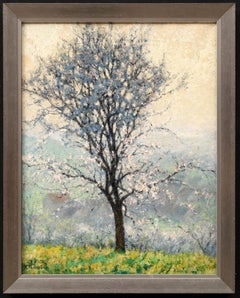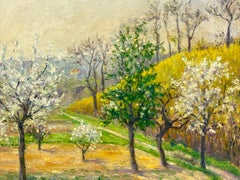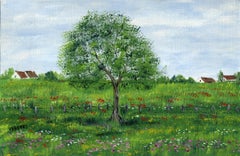Items Similar to Arbre en Fleurs, Oil Landscape, French Post-Impressionist
Want more images or videos?
Request additional images or videos from the seller
1 of 10
Robert DeborneArbre en Fleurs, Oil Landscape, French Post-Impressionist
$22,467.75
£16,250
€19,161.96
CA$31,103.05
A$33,724.81
CHF 17,897.36
MX$415,363.99
NOK 221,826.52
SEK 209,353.23
DKK 143,029.60
About the Item
Oil on board, mounted on panel, signed lower right
Image size: 19 x 23 (48 x 58 cm)
Contemporary style handmade frame
£10,000
Provenance
Artists Estate
The Artist
Robert Deborne was born in 1870 in Viviers, a small cathedral town in the South of France.
Little is known of the finer details of Deborne’s life and he remains rather an enigma. He was the son of a rich farmer, which gave him the opportunity to concentrate on his painting without financial pressures. Indeed, he was so dedicated that he abandoned his family just before the First World War, enabling him to focus completely on his work. Despite his prolificacy, he decided never to hold a solo exhibition nor had any connection with an art dealer to sell his works, although he exhibited often at the Salon d’Automne in Paris (becoming a member in 1923) and the Salon du Sud-Est.
A noted talent in his day, Deborne exhibited with major artists at the Salon du Sud-Est. This salon exhibition was on during the winter, which was perfect for Deborne as he was able to paint all summer, his preferred season. The Salon was a forum for unknown, innovative, emerging artists. His paintings were hung alongside works by Paul Cézanne, Henri Matisse, Paul Gaugin, Georges Rouault, André Derain, Albert Marquet, Felix Vallotton and Edouard Vullard, to name but a few.
Deborne was exhibiting at the Salon du Sud-Est in 1905, the year when the press coined the then rather disparaging term of ‘Fauves’ (French for ‘wild beasts’) to describe artists using strong, separate, unnatural colours in a representational manner, moving away from the realism of impressionism. The phrase stuck and the new movement of Fauvism was recognised, of which Deborne was certainly a part and influenced by.
Deborne had a close friendship with Paul Signac with whom he exhibited on several occasions at the Salon de Sud-Est. Signac spent some time in Viviers with Deborne, and the two are known to have been together on the banks of the Rhône, sketching and painting.
He mostly painted scenes of Viviers, his home town on the Rhône and its environs. He also featured Nebbio in Corsica in many of his paintings. His works are very much centered on these places that he loved, and his depictions of the Rhône, its banks and the hills beside it are poetically marked by variations in time, weather and season. He was particularly fond of painting at dawn and dusk.
Robert Deborne returned to the same landscapes again and again, portraying them from different perspectives and in changing light. This was a deliberate choice – he wanted to share the beauty of these inspiring places that were immediately before him. Vivarais to Deborne was what the Montagne Sainte-Victoire was for Cézanne or the banks of the Creuse were for Guillaumin. These landscapes were his life, and every brushstroke illuminates the beauty of these places for others to experience.
- Creator:Robert Deborne (1870 - 1944, French)
- Dimensions:Height: 23 in (58.42 cm)Width: 19 in (48.26 cm)
- Medium:
- Movement & Style:
- Period:
- Condition:
- Gallery Location:London, GB
- Reference Number:1stDibs: LU52412852322
Robert Deborne Robert Deborne was born in 1870 in Viviers, a small cathedral town in the South of France. Little is known of the finer details of Deborne’s life and he remains rather an enigma. He was the son of a rich farmer, which gave him the opportunity to concentrate on his painting without financial pressures. Indeed, he was so dedicated that he abandoned his family just before the First World War, enabling him to focus completely on his work. Despite his prolificacy, he decided never to hold a solo exhibition nor had any connection with an art dealer to sell his works, although he exhibited often at the Salon d’Automne in Paris (becoming a member in 1923) and the Salon du Sud-Est. A noted talent in his day, Deborne exhibited with major artists at the Salon du Sud-Est. This salon exhibition was on during the winter, which was perfect for Deborne as he was able to paint all summer, his preferred season. The Salon was a forum for unknown, innovative, emerging artists. His paintings were hung alongside works by Paul Cézanne, Henri Matisse, Paul Gaugin, Georges Rouault, André Derain, Albert Marquet, Felix Vallotton and Edouard Vullard, to name but a few. Deborne was exhibiting at the Salon du Sud-Est in 1905, the year when the press coined the then rather disparaging term of ‘Fauves’ (French for ‘wild beasts’) to describe artists using strong, separate, unnatural colours in a representational manner, moving away from the realism of impressionism. The phrase stuck and the new movement of Fauvism was recognised, of which Deborne was certainly a part and influenced by. Deborne had a close friendship with Paul Signac with whom he exhibited on several occasions at the Salon de Sud-Est. Signac spent some time in Viviers with Deborne, and the two are known to have been together on the banks of the Rhône, sketching and painting. He mostly painted scenes of Viviers, his home town on the Rhône and its environs. He also featured Nebbio in Corsica in many of his paintings. His works are very much centered on these places that he loved, and his depictions of the Rhône, its banks and the hills beside it are poetically marked by variations in time, weather and season. He was particularly fond of painting at dawn and dusk. Robert Deborne returned to the same landscapes again and again, portraying them from different perspectives and in changing light. This was a deliberate choice – he wanted to share the beauty of these inspiring places that were immediately before him. Vivarais to Deborne was what the Montagne Sainte-Victoire was for Cézanne or the banks of the Creuse were for Guillaumin. These landscapes were his life, and every brushstroke illuminates the beauty of these places for others to experience.
About the Seller
5.0
Vetted Professional Seller
Every seller passes strict standards for authenticity and reliability
Established in 2007
1stDibs seller since 2014
82 sales on 1stDibs
Typical response time: 3 hours
- ShippingRetrieving quote...Shipping from: London, United Kingdom
- Return Policy
Authenticity Guarantee
In the unlikely event there’s an issue with an item’s authenticity, contact us within 1 year for a full refund. DetailsMoney-Back Guarantee
If your item is not as described, is damaged in transit, or does not arrive, contact us within 7 days for a full refund. Details24-Hour Cancellation
You have a 24-hour grace period in which to reconsider your purchase, with no questions asked.Vetted Professional Sellers
Our world-class sellers must adhere to strict standards for service and quality, maintaining the integrity of our listings.Price-Match Guarantee
If you find that a seller listed the same item for a lower price elsewhere, we’ll match it.Trusted Global Delivery
Our best-in-class carrier network provides specialized shipping options worldwide, including custom delivery.More From This Seller
View AllPaysage du Viviers, French Post-Impressionist Oil Painting
Located in London, GB
Robert Deborne
French 1870 - 1944
Viviers
Oil on canvas, signed lower right
Image size: 25 3/4 x 20 1/2 inches
Gilt frame
Robert Deborne (1870-1944) ...
Category
Late 19th Century Post-Impressionist Landscape Paintings
Materials
Canvas, Oil
Les Cypres, French Post-Impressionist Landscape Painting, Signed
Located in London, GB
Oil on canvas, signed bottom right
Image size: 29 x 40 inches (74 x 101 cm)
Contemporary style handmade frame
Provenance
Artist's Estate
Robert Deborne
Robert Deborne was born in...
Category
Early 20th Century Post-Impressionist Landscape Paintings
Materials
Canvas, Oil
Paysage du Vivarais avec une Ferme, French Post-Impressionist, Signed Painting
Located in London, GB
Oil on canvas, signed bottom right
Image size: 26 1/4 x 19 3/4 inches (41.5 x 50 cm)
Hand made gilt frame
Provenance
Artist's Estate
This work is sold with a certificate of authe...
Category
Early 20th Century Post-Impressionist Landscape Paintings
Materials
Oil, Canvas
By the River, Montreuil Oil Landscape 20th Century
Located in London, GB
Frank Lewis Emanuel
1865 - 1948
By the River, Montreuil
Oil on board, signed and inscribed on reverse
Image size: 13 1/4 x 10 inches (33.5 x 25.5 c...
Category
Early 20th Century Landscape Paintings
Materials
Oil, Board
Route de Montagne
Located in London, GB
Oil on canvas, signed bottom right
Image size: 20 1/2 x 24 1/2 inches (53 x 62 cm)
Original gilt frame
Provenance
Artist’s Estate
Robert Deborne
Robert Deborne was born in 1870 in...
Category
20th Century Impressionist Landscape Paintings
Materials
Canvas, Oil
Spring in Dorset, 20th Century English Oil Landscape, Female Artist
Located in London, GB
Oil on board
Image size: 12 1/2 x 15 1/2 inches (31.75 x 40 cm)
Contemporary style handmade frame
Exhibitions
1952 Royal Academy of Arts Exhibition, Gallery no. VII, no.429.
This forest scene invites the viewer into a multi-sensory event where the cool, damp shadows of the foliage can almost be felt and the rich bouquet of the forest floor recalled. Here, Sherlock has chosen a somewhat unusual angle and composition, dissecting each truck and tree form so that only a part can be seen. Furthermore, as we look into the depths of this space it becomes clear that we are stood gazing down into a valley that is in the distance, behind this wooded area. Indeed, instead of giving us an uninterrupted view of this vista, as perhaps would be expected, this view is deliberately blocked and our focus is directed instead towards the organic forms in the foreground.
The Artist
Marjorie Sherlock was born at Fir Tree Cottage, George Lane, Wanstead, Essex, on 3 February 1891, the elder child of the civil engineer, Henry Sherlock, and his wife, Alice (née Platts), who was born in Benares, India. By 1901, the family was living at ‘The Limes’, 121 Mill Road, Cambridge, and Marjorie received an education locally. In 1918, she entered into marriage with her cousin, Major Wilfrid Barrett, though this proved unsuccessful and they later divorced (he remarrying in 1941). She then continued to live at the family home until the Second World War.
During the First World War, Marjorie Sherlock studied at Westminster Technical Institute under the Camden Town School painters, Walter Sickert and Harold Gilman.
She exhibited at the Royal Academy of Arts from 1917, when she showed a powerful view of the interior of Liverpool Street Station (Government Art Collection) (to which the current etching [202] relates). In time, she would exhibit at the International Society, the New English Art Club, the Royal Society of British Artists, the Society of 207 Graphic Art and the Women’s International Art Club (becoming a member of the last two). She also showed work internationally.
Developing as a printmaker as well as a painter, Sherlock studied etching under Malcolm Osborne at the Royal College of Art in 1925. She published her etchings in four series, the titles of which indicate her love of travel: ‘English Etchings, ‘Egyptian Etchings’ (both 1925), ‘German Etchings’ (1929) and ‘Indian Etchings’ (1932). During this period, she also visited the united States. More admiring of Continental painters than British ones, she furthered her studies, in 1938, by working in Paris under André L’Hôte and André Dunoyer de Segonzac.
During the Second World War, Sherlock moved to East Devon and settled at Oxenways, a Victorian hunting lodge...
Category
1950s Modern Landscape Paintings
Materials
Canvas, Oil
You May Also Like
Springtime: Almond Tree in Bloom (Printemps:Amandier en Fleur) Raymond Thibesart
By Raymond Thibesart
Located in SANTA FE, NM
Springtime: Almond Tree in Bloom (Printemps: Amandier en Fleur)
Raymond Thibesart (France, 1874-1968)
Oil on canvas, circa 1920s
19 x 25 1/2 (22 3/4 x 28 1/2 framed) inches
Raymond ...
Category
1920s Post-Impressionist Landscape Paintings
Materials
Canvas, Oil
Blossoming Trees in a Spring Orchard, A Pastoral Landscape in Full Bloom
Located in Cirencester, Gloucestershire
Blossoming Trees
by Regine David (female French artist, 1910-2018)
oil painting on board, unframed
board: 13 x 16 inches
inscribed verso
condition: This painting is in excellent cond...
Category
Mid-20th Century Post-Impressionist Landscape Paintings
Materials
Oil
French Landscape with Blossoming Trees and Farmhouse in Beaumont Pléneuf
By Fanch Lel
Located in Cirencester, Gloucestershire
Title: French Landscape with Blossoming Trees and Farmhouse in Beaumont Pléneuf
By Fanch Lel
Size: 7 x 9.5 inches (height x width)
Oil painting on cardboard, unframed
Condition: Good...
Category
20th Century Impressionist Landscape Paintings
Materials
Oil
French Impressionist, Original signed Oil Landscape, wild Flowers, Tree
Located in AIX-EN-PROVENCE, FR
Subject : Small oil painting of a landscape in the French countryside, in excellent condition.
This paint pastoral landscape depicts a rural scene of serene beauty. A majestic tree...
Category
Early 2000s Contemporary Landscape Paintings
Materials
Oil
Impressionism Tree Spring Blossom Early Morning, Painting, Oil on Canvas
By Gav Banns
Located in Yardley, PA
Early tree blossoms in the French countryside. Painted in an impressionist manner on Italian canvas attached to a wooden board. :: Painting :: Impressionist :: This piece comes with ...
Category
21st Century and Contemporary Impressionist Paintings
Materials
Oil
Provence Colorful Trees Landscape - French Impressionist Original Oil Painting
Located in Cirencester, Gloucestershire
Provence Colourful Trees, French Original Oil Painting
French schooled artist, 20th Century
Oil painting on thin card/paper, unframed
Card size: 15 x 18 inches
Delightful French Imp...
Category
20th Century Impressionist Landscape Paintings
Materials
Oil
